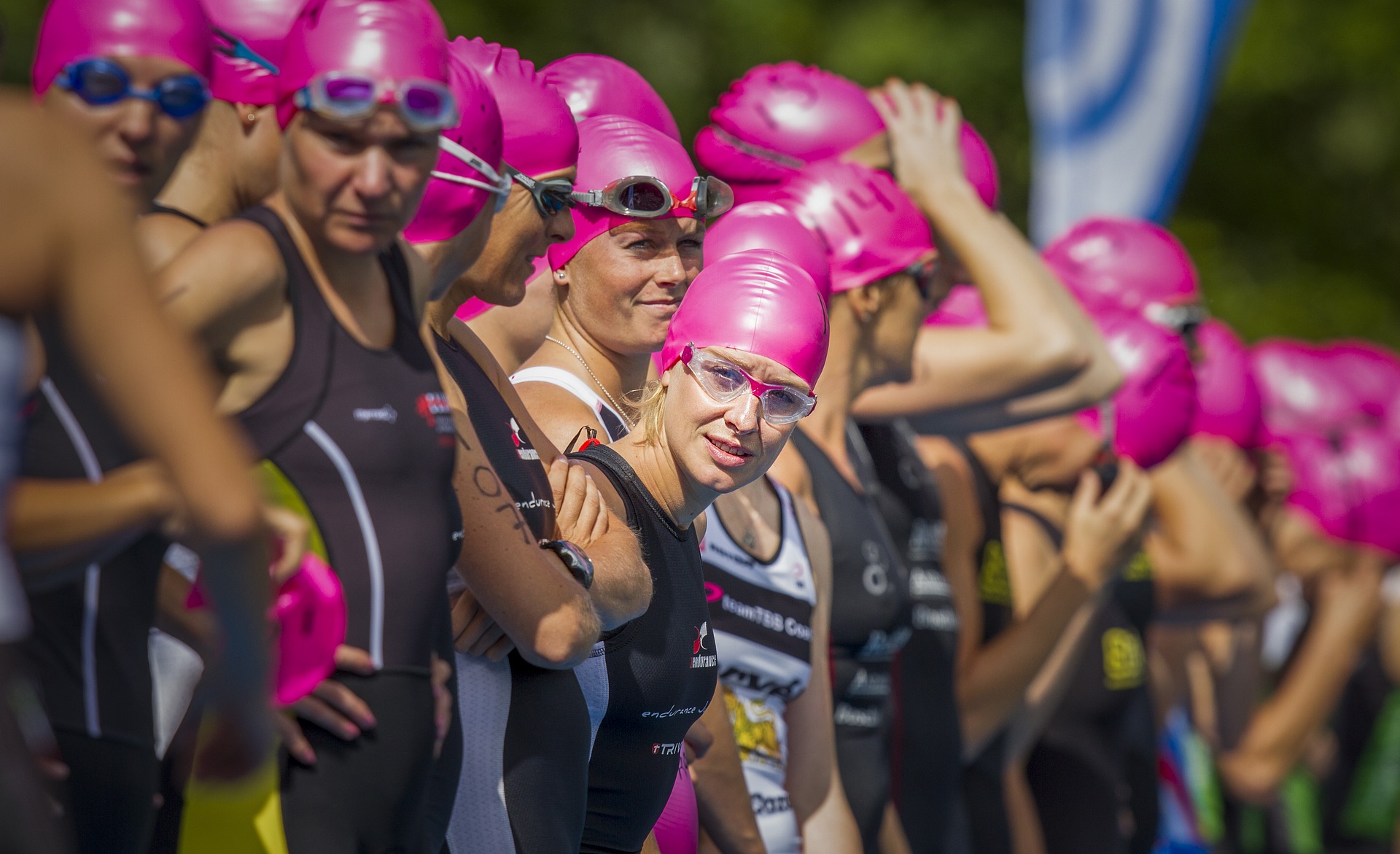Here’s How to Choose a Training Plan for Your Triathlon
Learn where to find the best training resources to fit your needs and start your training off right.

Congratulations! You’ve decided to dive into the world of triathlons, and with that, into a sea of unknowns. In order to make the most of your triathlon journey—your first race, and hopefully many more—it’s important to consider the available training options.
Despite what you might see on social media, just winging it can lead to injury or a lackluster race-day performance. Or both.
Most athletes will download a training plan, hire a coach, or do some combo. And as with all things in life and sport, each option has advantages and disadvantages. Let’s take a look.
Download Triathlon Training Plan
There is no shortage of training plans for triathlons across all distances on the Internet. These are often written by accredited coaches, but not always, and it’s smart to do some research on where the plan is coming from. Make sure to look for a USAT or Ironman certification. Many are free, and for first-timers or athletes who don’t need their plan to be hyper-focused or specialized, the cookie cutter free model can work well.
Age Grouper, Mike Maher (M35-40, NY) has been competing for six years and has seen success using this approach. “I don’t have a formal coach. I’ve used programs such as TrainerRoad before, but I tend to create my own based off of templates I’ve found online.”
Then, of course, there are paid training plans, the cheapest of which will give you a pretty basic plan that’s slightly more focused or dynamic than the free option. As the prices climb, so do the perks, including workout specificity and direct access to a coach. A great place to find plans is at TrainingPeaks.com.
Pros
Good for self-starters who can follow instructions without hand-holding
They will lay out the basics of what to do each day over a designated time frame
Upload your training plan into training apps that will sync your workouts from your watch and trainer to the program for easy viewing
Strong training plans designed by prominent coaches for an affordable price
Cons
Workouts are usually designed for a one-size-fits all, which means it’s not targeting your strengths or weaknesses
Some plans include periodic testing, like a time trial, but most don’t which can make it hard to track progress
Limited flexibility to reschedule missed workouts or adjust training plan
Unless you pay for a coach add-on, you can’t ask questions or discuss concerns
No motivational support or accountability
Hire a Coach
Not surprisingly, the best triathletes in the world work with coaches. But even seasoned-but-not-elite and newer triathletes can benefit from one-on-one coaching; particularly athletes competing in longer distance triathlons.
Of the thirty AgeGrouper athletes we surveyed, 24 of them currently or have previously worked with a coach.
As someone who has been competing in the sport for 14 years, Age Grouper and triathlon coach Chris Kaplanis (M35-39, NJ) wants newer athletes to understand that, “there is a steep learning curve in triathlon and many mistakes can be avoided by having a good team of experienced coaches.” Working with a dedicated expert for customized training throughout the process can really improve performance.
Before your coach even lays out a training plan for you, he or she will work with you to identify your goals, evaluate your strengths and weaknesses, and then write up a plan to fit those needs. You can find coaches in a number of places including the USAT, Ironman, coaching directories and your local bike and running shops.
Pros
Customized training that considers prior injury, strengths and weaknesses, specific goals and schedules
On-demand resource that guides you every step of the way
Real-time feedback on progress
Accountability of someone monitoring your performance
Most coaches work with many athletes or have their own club; this gives you access to a community
Cons
Hiring a coach is expensive, ranging from $175 to $500 a month. Some coaches require multiple months’ payments in advance.
Not unlike dating or therapy, personalities are important. It’s hard to work closely with a coach if you don’t mesh or agree on coaching technique.
Subscription Training Programs
In recent years, we’ve seen a hybrid of personal coach and general training plans. These subscription plans fall right in the middle in terms of price. They allow you to access expertly designed workouts with high specificity while also giving you the flexibility to customize your training plan and create your own schedule.
Most of these plans include limited access to a coach to analyze data and answer questions on a one off basis. This is especially helpful if you don’t have experience or expertise in creating your own plan.
Pros
Affordable, semi-personalized training ($50 to $125 per month)
Access to educational materials on demand such as articles on race day nutrition
Easily customizable training plans
Access to a community—most of these organizations have large followings with members all over the country
Cons
You need a basic understanding of creating a training plan to make sense of the available workouts and schedules
Coaching access is limited

